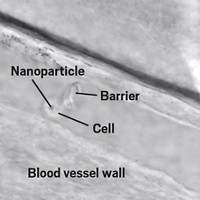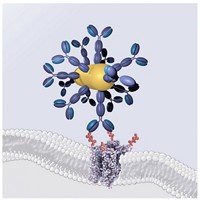Advertisement
Grab your lab coat. Let's get started
Welcome!
Welcome!
Create an account below to get 6 C&EN articles per month, receive newsletters and more - all free.
It seems this is your first time logging in online. Please enter the following information to continue.
As an ACS member you automatically get access to this site. All we need is few more details to create your reading experience.
Not you? Sign in with a different account.
Not you? Sign in with a different account.
ERROR 1
ERROR 1
ERROR 2
ERROR 2
ERROR 2
ERROR 2
ERROR 2
Password and Confirm password must match.
If you have an ACS member number, please enter it here so we can link this account to your membership. (optional)
ERROR 2
ACS values your privacy. By submitting your information, you are gaining access to C&EN and subscribing to our weekly newsletter. We use the information you provide to make your reading experience better, and we will never sell your data to third party members.
Biotechnology
Injectable nanoparticles give mice infrared vision
Biocompatible nanoparticles absorb near IR light and emit visible light that eye cells can detect
by Laura Howes
February 28, 2019
| A version of this story appeared in
Volume 97, Issue 9

The military and police sometimes spot people trying to hide by using cameras that detect the heat coming off their bodies. These devices work by detecting infrared light, which is emitted by hot objects. Scientists in the US and China wondered if there was a less bulky solution for such imaging. Their solution: biocompatible nanoparticles that can give animals (and potentially humans) the ability to see near IR light (Cell 2019 DOI: 10.1016/j.cell.2019.01.038). The downside? They require an injection in the eye.
“This research is just plain cool,” says Vince Rotello of the University of Massachusetts Amherst, who also works on integrating nanomaterials with biology but was not involved in the new study. Rotello points out that most nanomedical research focuses on curing disease rather than adding extra capabilities.
These injectable particles essentially convert near IR light into wavelengths that mice can see. Gang Han of the University of Massachusetts Medical School and coworkers designed sodium yttrium fluoride nanoparticles doped with ytterbium and erbium that specifically absorb wavelengths emitted by infrared LEDs and then emit wavelengths that could be picked up by the light-sensing cells inside a mouse’s eyes. Mice and humans can normally only see wavelengths of light between 380 and 740 nm. These nanoparticles absorb light at 980 nm.
Han’s group sent the particles to Tian Xue’s group at the University of Science and Technology of China in Shanghai, who injected the nanoparticles into the eyes of mice. Sugars on the outside of the nanoparticles bind to photoreceptor cells in the eye without harming them. Mice receiving the nanoparticle injections could see and navigate in rooms lit with visible light and in rooms with only infrared light. Han and Xue were surprised that the nanoparticles worked without needing to add anything more to the light-sensitive cells. The nanoparticles remained in place and functioning several months later.
Han also says that the nanoparticles can be easily modified to detect different wavelengths of light, such as longer infrared wavelengths for thermal imaging or visible light wavelengths to help counter colorblindness in people.
UPDATE:
This story was updated on March 1, 2019, to include Vince Rotello's affiliation.





Join the conversation
Contact the reporter
Submit a Letter to the Editor for publication
Engage with us on Twitter